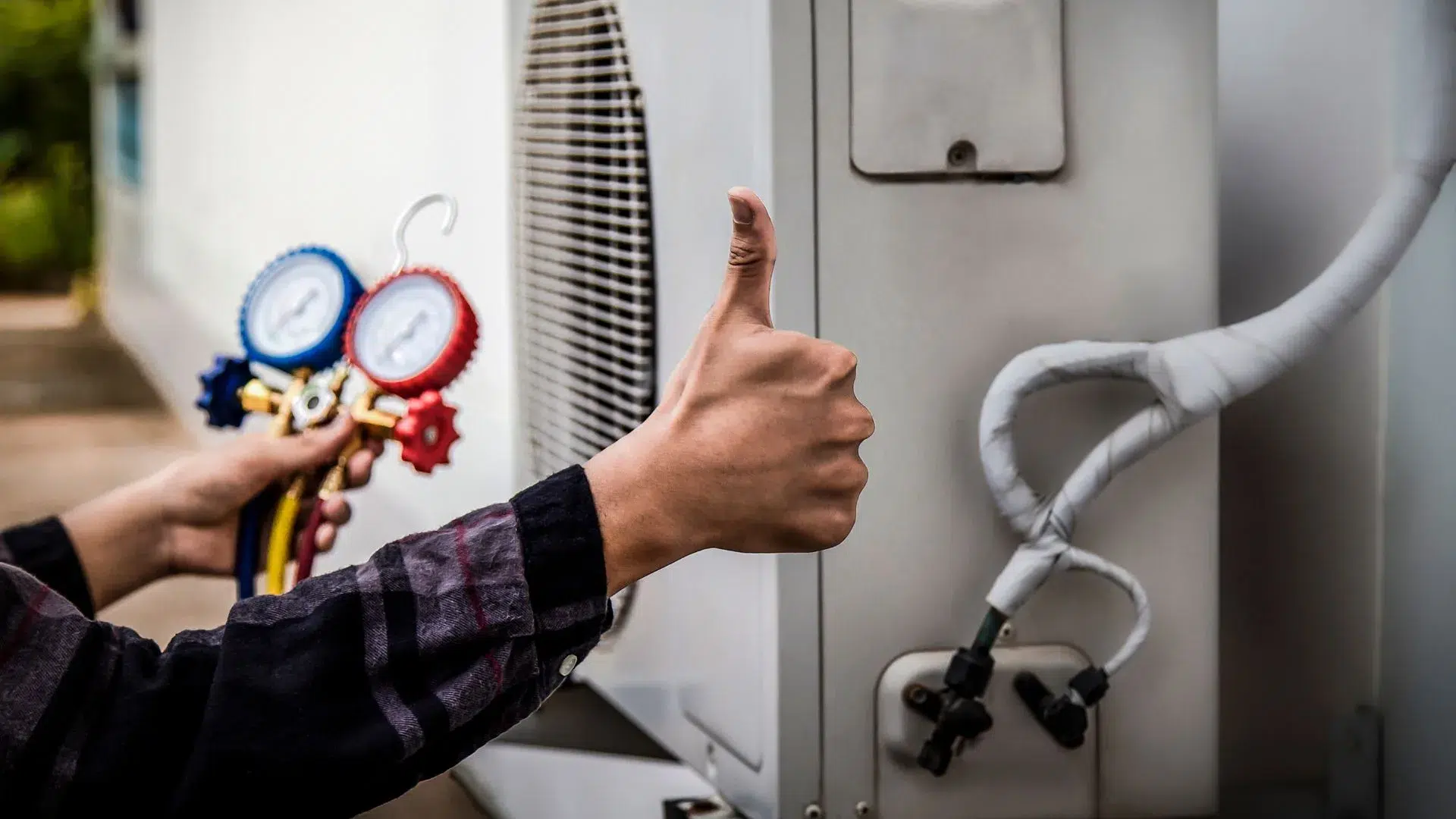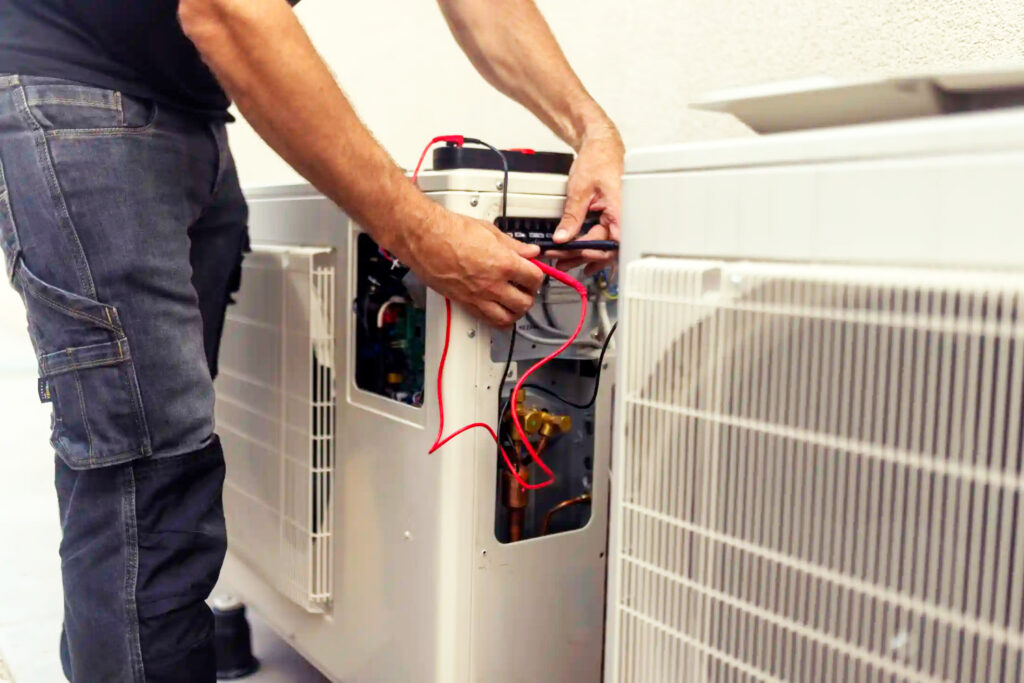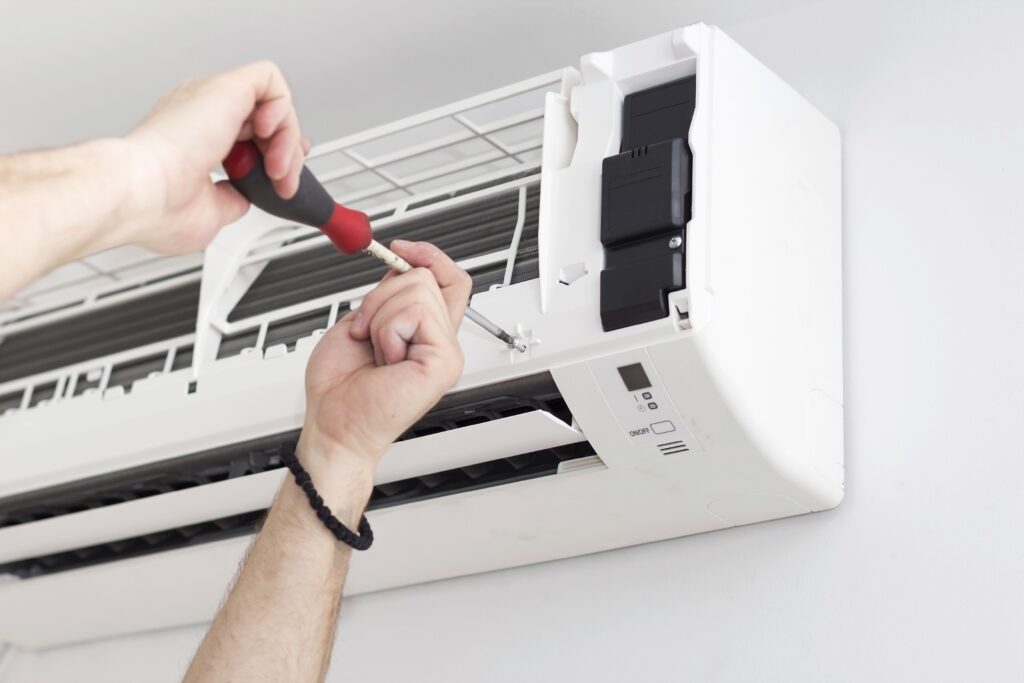
Quick answer:
An HVAC system short cycles when it turns on and off in rapid bursts. This usually occurs in under five minutes without reaching the thermostat setpoint. The most common causes are a dirty air filter, low refrigerant, thermostat issues, oversized equipment, or safety‑switch faults. Start by replacing the filter, checking thermostat placement, and inspecting airflow. If short cycling continues, shut the system off and call a certified HVAC repair contractor to test refrigerant levels, electrical components, and system sizing before permanent damage occurs.
Understanding Short Cycling and Why It Happens
Short cycling is more than an annoying on/off pattern. It’s a sign that your system is in distress. Every start‑up uses significantly more electricity and places extra torque on motors and compressors. Over time, that stress accelerates wear on bearings, belts, and control boards, leading to expensive repairs and early system failure.
Energy Impact
- Frequent start‑ups can increase electricity consumption by up to 30%.
- A compressor starting ten extra times per hour can double its daily run time, even if cooling output remains the same.
Comfort Consequences
- The house never achieves stable temperatures, creating hot and cold pockets.
- Short cooling cycles fail to remove humidity, leaving rooms feeling sticky even when the thermostat says it’s cool.

The Most Likely Culprits Behind Short Cycling
These are the most common reasons for short cycling:
Clogged or Restrictive Air Filter
A dirty filter chokes airflow, causing excessive heat on furnaces or freezing the coil on air conditioners. Modern systems detect abnormal pressures and shut down to prevent damage. Over time, repeated shutdowns evolve into rapid cycling.
Low Refrigerant Charge
Refrigerant is the lifeblood of cooling. Low charge triggers low‑pressure switches, turning off the compressor to avoid coil freezing. Each restart stresses the motor and risks permanent burnout.
Thermostat Location and Calibration
A thermostat placed in direct sunlight, near supply vents, or on an exterior wall may record temperatures that don’t reflect the main living areas. It signals the system to shut off too early, then restart when the rest of the house warms up.
Oversized Equipment
Bigger isn’t always better. An oversized unit floods the supply ducts with conditioned air so quickly that the thermostat is satisfied within minutes, shutting the system down before rooms reach uniform comfort. Humidity control also suffers because the evaporator coil doesn’t stay cold long enough to condense moisture.
Electrical or Safety‑Switch Failures
Loose wiring, corroded contactors, failing capacitors, or malfunctioning flame‑rollout sensors can interrupt power unexpectedly. The control board resets, restarts, and the short‑cycle loop begins anew.
Advanced DIY Troubleshooting (If You’re Handy)
Disclaimer: Always kill power at the breaker before removing panels or touching internal components.
Inspect and Replace the Filter
Even a slightly gray filter can restrict airflow. Use a fresh, correctly sized filter with a moderate MERV rating (8–11 for most homes). Overly tight, high‑MERV filters can also cause short cycling.
Clean the Outdoor Condenser
- Shut off disconnect.
- Gently hose down coil fins from inside out to remove debris.
- Clear at least two feet of space around the unit for unobstructed airflow.
Verify Thermostat Operation
- Remove the thermostat cover and ensure wiring connections are tight.
- Check that the anticipator or cycle rate settings match the system type.
- Relocate the thermostat or shield it if it sits in direct sunlight.
Reset the System
Sometimes a hard reset clears lockouts: turn off the breaker, wait five minutes, and restart. If short cycling returns, deeper diagnostics are needed.
Professional Diagnostics: What a Technician Will Do
When DIY attempts don’t work, it’s time to call in a professional.
- Static Pressure Testing – Measures supply and return pressures to spot duct restrictions.
- Refrigerant Analysis – Uses gauges and superheat/subcool calculations to confirm charge.
- Electrical Inspection – Tests capacitors, contactors, and control voltage for drop‑outs.
- Safety‑Switch Verification – Confirms pressure, roll‑out, and high‑limit switches are operating within spec.
- Load Calculation – Determines if equipment is oversized or undersized based on square footage, insulation, and window orientation.
Pinpointing the real cause prevents “parts darts” (replacing components at random). Correct diagnosis can mean the difference between a simple capacitor swap and an unnecessary compressor replacement.

Long‑Term Fixes Your Contractor Might Recommend
These fixes can keep your HVAC system running:
Coil and Blower Deep Clean
Dusty blower wheels or matted evaporator fins disrupt airflow and pressures, producing the same symptoms as a dirty filter.
Refrigerant Leak Repair and Recharge
Technicians locate leaks using electronic sniffers or UV dye, repair the breach, and recharge to factory specifications.
Ductwork Modifications
Crushed returns or undersized supply trunks can cause high static pressure, leading to lockouts and cycling. Adding returns or resizing ducts restores balance.
Right‑Sizing the System
When oversizing is confirmed, replacing the equipment with properly sized, variable‑speed technology eliminates short cycling and enhances humidity control.
Preventing Future Short Cycling
These steps can prevent short cycling:
Seasonal Maintenance
Schedule professional service each spring and fall. Technicians clean coils, tighten wiring, lubricate motors, and verify refrigerant pressures, catching issues before they cause rapid cycling.
Filter Discipline
Replace filters every 30–60 days, or more often if you have pets, allergies, or ongoing renovations.
Smart Monitoring
Install a Wi‑Fi thermostat and optional smart sensors. Many models track cycle length and send alerts when patterns change, allowing early intervention.
Keep Outdoor Units Clear
Trim shrubs, remove leaves, and maintain two feet of clearance. Adequate airflow prevents overheating and pressure trips.
Watch Your Bills
A steady month‑over‑month increase in energy use, without lifestyle changes, is often the first clue something’s wrong.
Frequently Asked Questions
Is short cycling bad for my HVAC system?
Yes. The repeated high‑amperage draw of start‑up and inadequate run time cause excessive wear on compressors and blowers, drastically shortening system life.
Can a thermostat cause short cycling?
Absolutely. Poor placement, incorrect wiring, or misconfigured heat‑anticipator settings can all lead to rapid cycling.
How long should an HVAC cycle last?
Under moderate conditions, most residential systems run 10–20 minutes per cycle. Times extend in extreme heat or cold. Anything consistently under five minutes is worth checking.
Key Takeaway
Short cycling is your HVAC system’s cry for help. Replacing a filter or repositioning a thermostat might solve it, but low refrigerant, oversizing, or electrical faults require a professional touch. Address the issue early to avoid skyrocketing bills, comfort problems, and premature equipment failure.Ready to stop the short‑cycle spiral? Contact our team today for precise diagnostics and repairs that last. Experience why homeowners call us The Last Home Service Company You’ll Ever Need